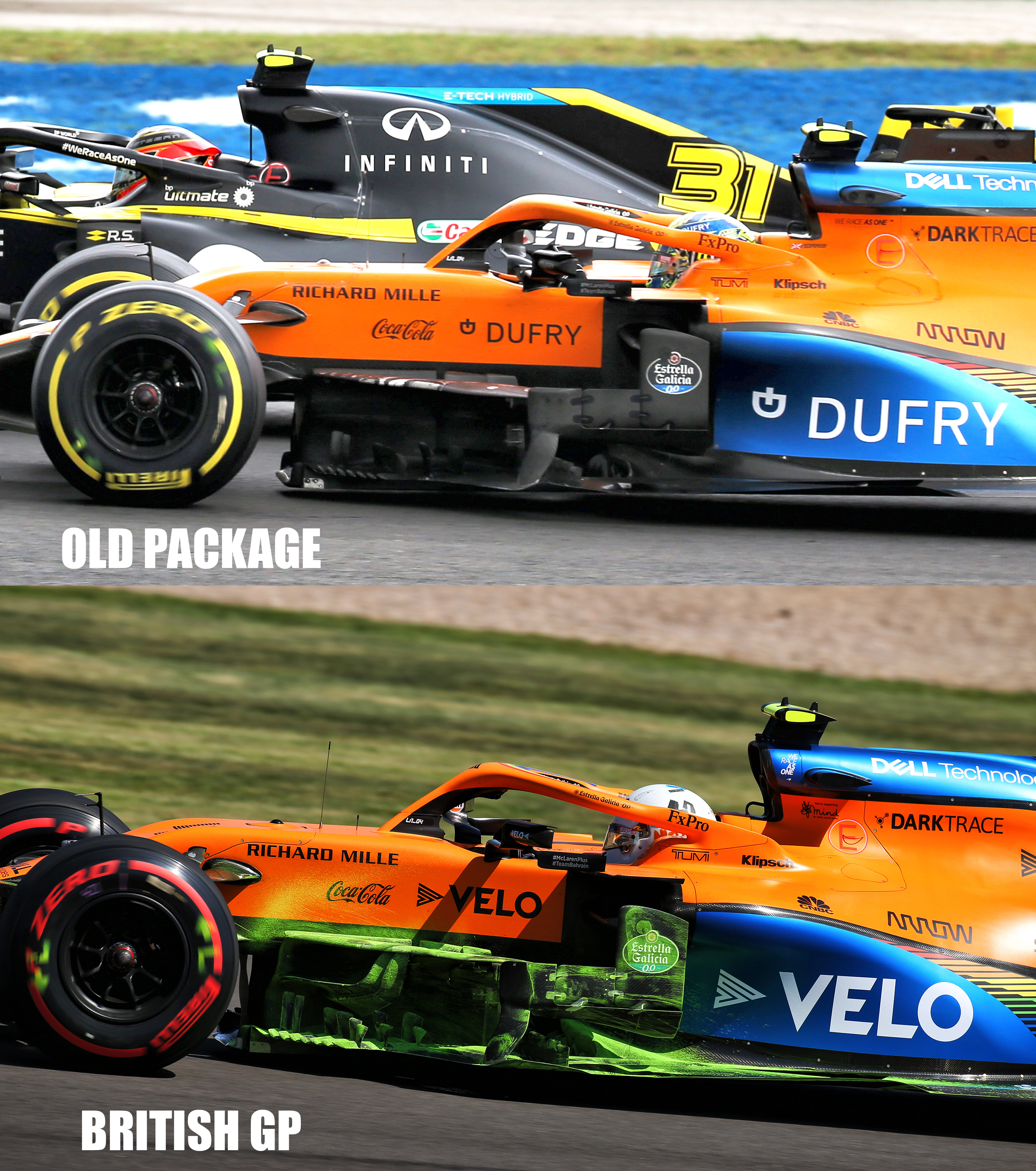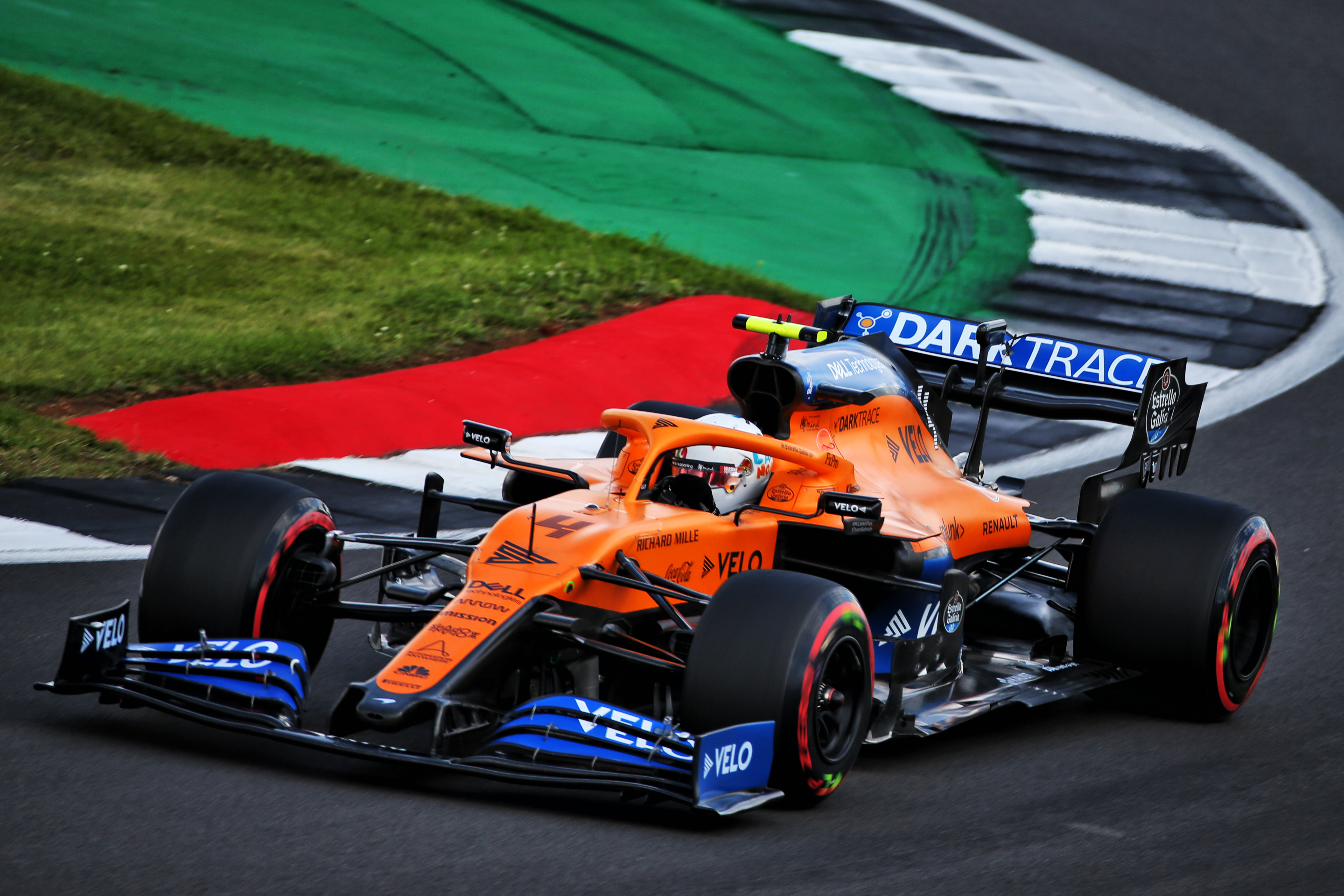Up Next

McLaren team principal Andreas Seidl believes the upgrades introduced during the British Grand Prix are a clear step forward.
A new package was trialled during Friday practice featuring a modified front wing, tweaked bargeboards and a lower-downforce rear wing that the team carried forward into qualifying for the race at Silverstone.
The modifications helped McLaren driver Lando Norris to qualify fifth and ahead of the lead Racing Point of Lance Stroll, albeit just under 1.5s slower than Lewis Hamilton’s pole position time.
“It’s definitely a good step forward,” said Seidl on Saturday.
“At the same time, the steps you make in Formula 1 with these upgrades are always very small and the important thing is to simply keep going and adding and adding and adding race weekend by race weekend.
“The difficulty for us really was yesterday, whenever you do such comparison you want to do proper comparison, collecting good data in order to understand, especially with this limited track testing that you have, if everything you do in the windtunnel and CFD is correlating.
“With the gains you make with such updates are so small, you obviously wish to have consistent conditions on track, or let’s say laboratory conditions as far as possible, and the difficulty yesterday was simply with all these gusty winds we had it was not easy for the guys here and back home to actually get good data to make to make the right calls.
“In the end, we ran today with both cars with all the updates on the car, which confirms that the great work everyone was doing back home and out here at the track is paying off.”
Gary Anderson on McLaren’s upgrades
 During FP1, we saw McLaren running with a lot of flow-viz on its bargeboards. That wasn’t because of the new bargeboard package but to check out what the airflow coming off the modified front wing was doing.
During FP1, we saw McLaren running with a lot of flow-viz on its bargeboards. That wasn’t because of the new bargeboard package but to check out what the airflow coming off the modified front wing was doing.
The flow off the front wing influences everything downstream so it’s easy to create a more powerful front wing but lose everything you have gained further downstream.
This flo viz analysis will also allow McLaren to understand where it might just be able to squeeze a little more out of the bargeboards. If the flow to them is altered slightly, the team might be able to tweak some of those small turning vanes just that little bit to get a further improvement.
 There are various changes to the front wing, although none of them major.
There are various changes to the front wing, although none of them major.
It looks like the leading edge separation point of the new one has more shape to it. With the leading edge, you try to match this point where the airflow separates over the top surface and bottom surface.
The flaps at the trailing edge and the cord length are not uniform and because of that, the way the airflow separates on the leading edge will not be uniform. If you don’t get this point aligned correctly it leads to separation problems on either the top or bottom surface.
McLaren has also altered the wing endplate. The footplate is quite different in that it is more like two different tunnels on the underside. The old one (pictured below) just had one full length tunnel.
Also, it has removed the top rear corner cutout. Both of these changes will affect the airflow going around the inside one outside of the front tyre contact patch.
The rear wing has also been changed since Hungary, but that is just to suit the circuit requirements. Hungary is everything you have plus a bit more in terms of downforce, whereas at Silverstone you want to have less drag. You always want as much downforce as possible but unfortunately you need to reduce this to get the drag down.
When you are trying to reduce the drag, you look at the wing loading across its width and then alter the angle of attack to optimise the higher drag sections.




